The NVIDIA GeForce GTX 1660 Review, Feat. EVGA XC GAMING: Turing Stakes Its Claim at $219
by Ryan Smith & Nate Oh on March 14, 2019 9:01 AM ESTCompute & Synthetics
Shifting gears, we'll look at the compute and synthetic aspects of the GTX 1660.
Beginning with CompuBench 2.0, the latest iteration of Kishonti's GPU compute benchmark suite offers a wide array of different practical compute workloads, and we’ve decided to focus on level set segmentation, optical flow modeling, and N-Body physics simulations.
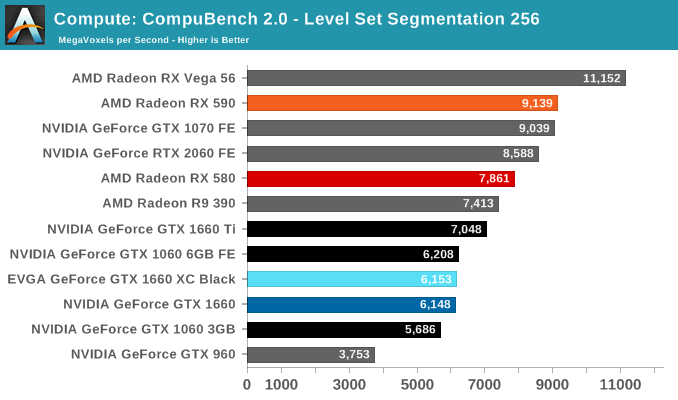
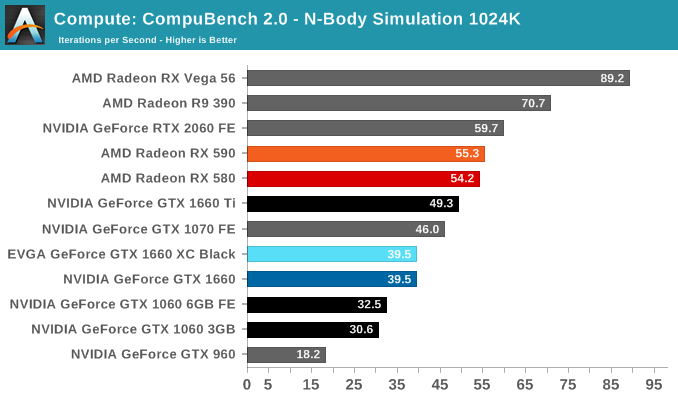
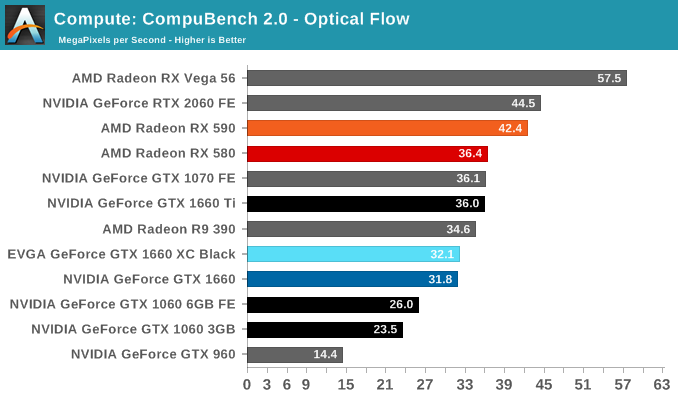
Moving on, we'll also look at single precision floating point performance with FAHBench, the official Folding @ Home benchmark. Folding @ Home is the popular Stanford-backed research and distributed computing initiative that has work distributed to millions of volunteer computers over the internet, each of which is responsible for a tiny slice of a protein folding simulation. FAHBench can test both single precision and double precision floating point performance, with single precision being the most useful metric for most consumer cards due to their low double precision performance.
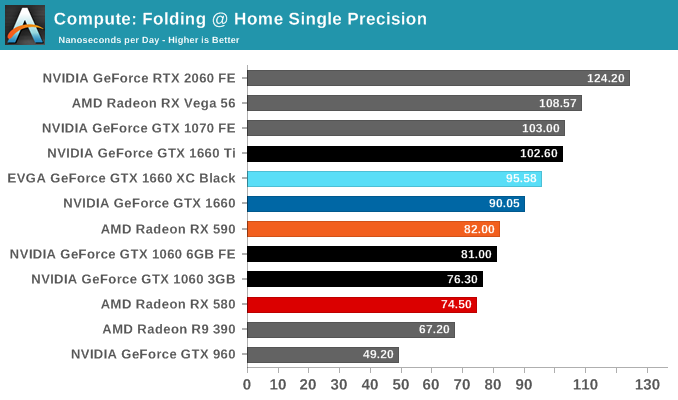
Next is Geekbench 4's GPU compute suite. A multi-faceted test suite, Geekbench 4 runs seven different GPU sub-tests, ranging from face detection to FFTs, and then averages out their scores via their geometric mean. As a result Geekbench 4 isn't testing any one workload, but rather is an average of many different basic workloads.
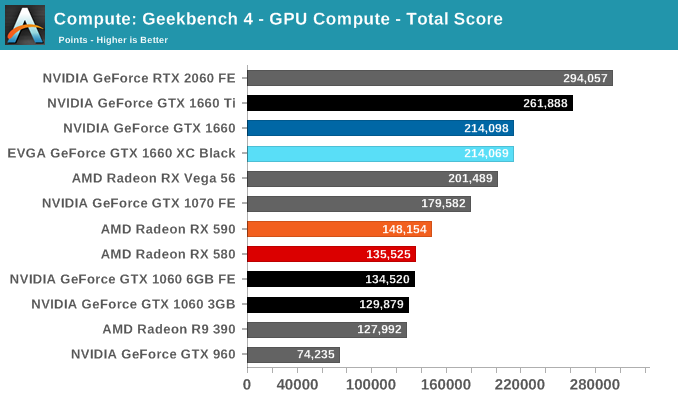
In lieu of Blender, which has yet to officially release a stable version with CUDA 10 support, we have the LuxRender-based LuxMark (OpenCL) and V-Ray (OpenCL and CUDA).
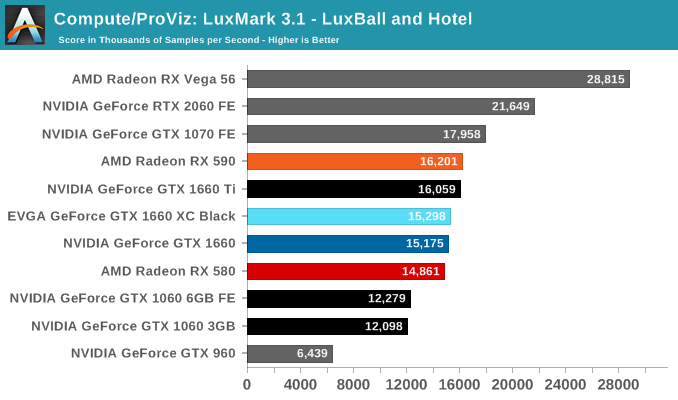
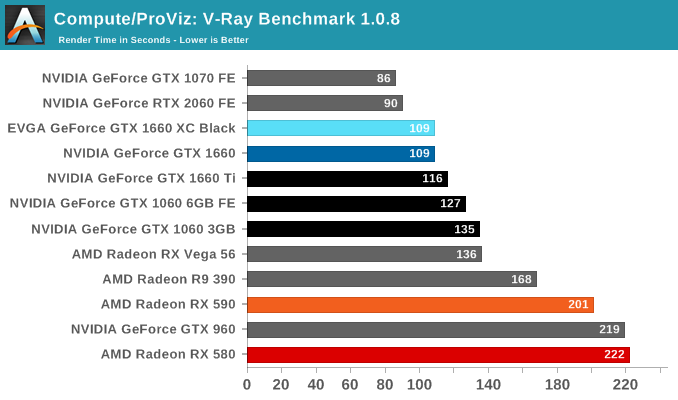
We'll also take a quick look at tessellation performance.
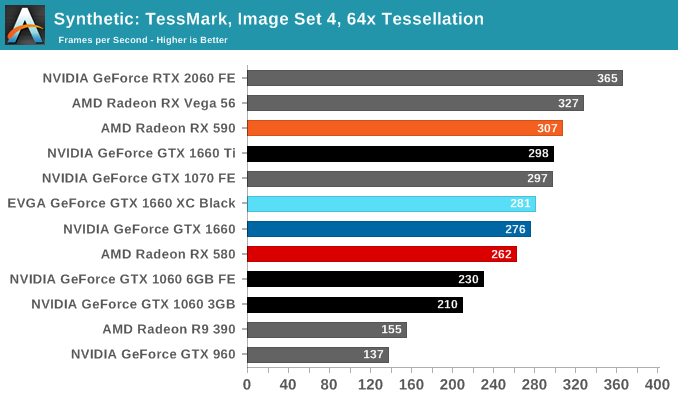
Finally, for looking at texel and pixel fillrate, we have the Beyond3D Test Suite. This test offers a slew of additional tests – many of which we use behind the scenes or in our earlier architectural analysis – but for now we’ll stick to simple pixel and texel fillrates.
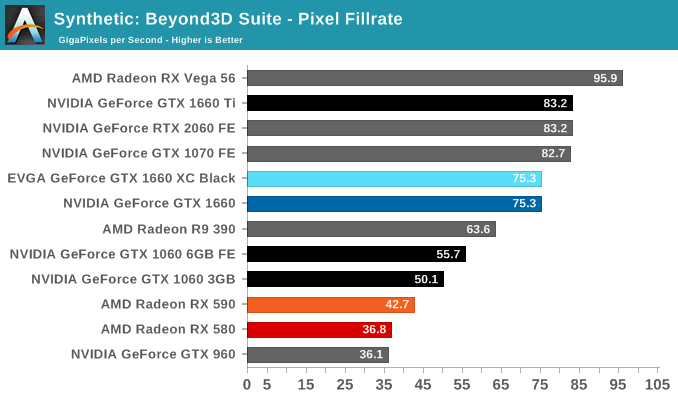
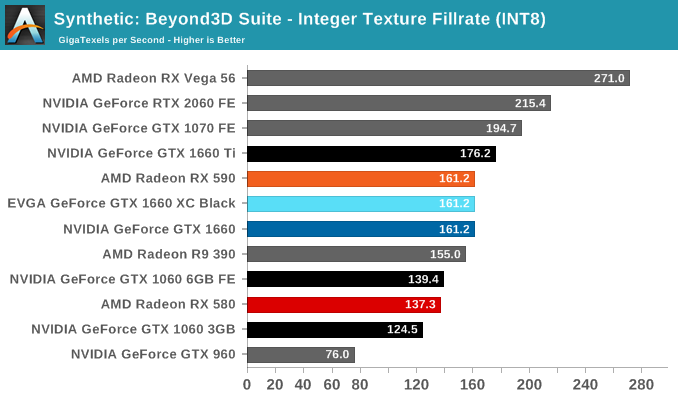
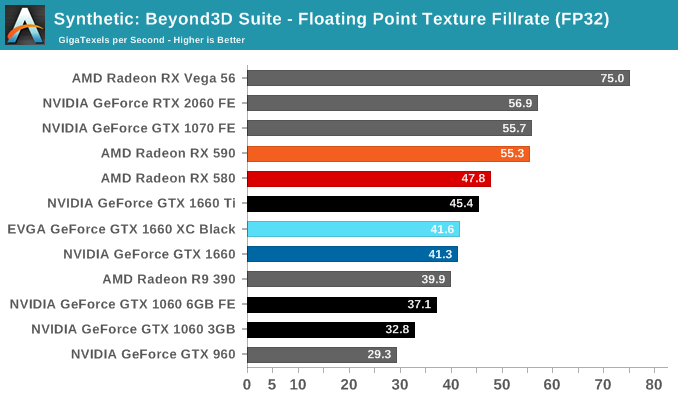










77 Comments
View All Comments
The_Assimilator - Friday, March 15, 2019 - link
1660 Ti power usage: more for GPU, less for GDDR6. 1660: less for GPU (due to 2 fewer SMs), but more for GDDR5. Hence why overall power usage for both is the same. What I still don't understand is why all of these cards, despite being rated to draw under 150W, come with 8-pin power connectors; 6-pin would make far more sense and would make them compatible with many older systems.Alistair - Friday, March 15, 2019 - link
They are still holding back. This would have been an incredible 7nm card. That's still what I want. Not interested.backpackbrady - Saturday, March 16, 2019 - link
amazing post ryan / nate!@# hoping you could answer a question beyond my knowledge for me. would the 1660 hardware-based encoder nvenc be at a disadvantage with the TU116 and GDDR5 changes? im not sure what effects the encoders performance. thank you very much for your time and knowledge. bradyHrel - Tuesday, March 19, 2019 - link
Suddenly Nvidia's pricing seems completely fair.Supercell99 - Thursday, March 28, 2019 - link
Chinese are done dumping after market GFX cards. Used market is drying upHrel - Saturday, March 30, 2019 - link
This is looking like one hell of a good card for the money and the market. Faster than the RX 580 and RX 590, priced like a cheap 590 or average 580, less power draw, runs cooler, includes Nvidias (frankly) superior software and drivers. So right now either the GTX1070 used, or the GTX 1660 new, 1070 should be about the same price even used. Only cheaper ones I found were crypto mining cards and F that noise.There are some technology differences but idk, you guys don't seem to go into great detail about the differences between GTX 1070 and GTX 1660 excluding game performance. Are there any notable DX features included in the newer card or is it just straight performance improvement?
Hrel - Saturday, March 30, 2019 - link
I think a year or so from now I'll pick one of these up, either 1660 or ti, will depend on then current pricing.